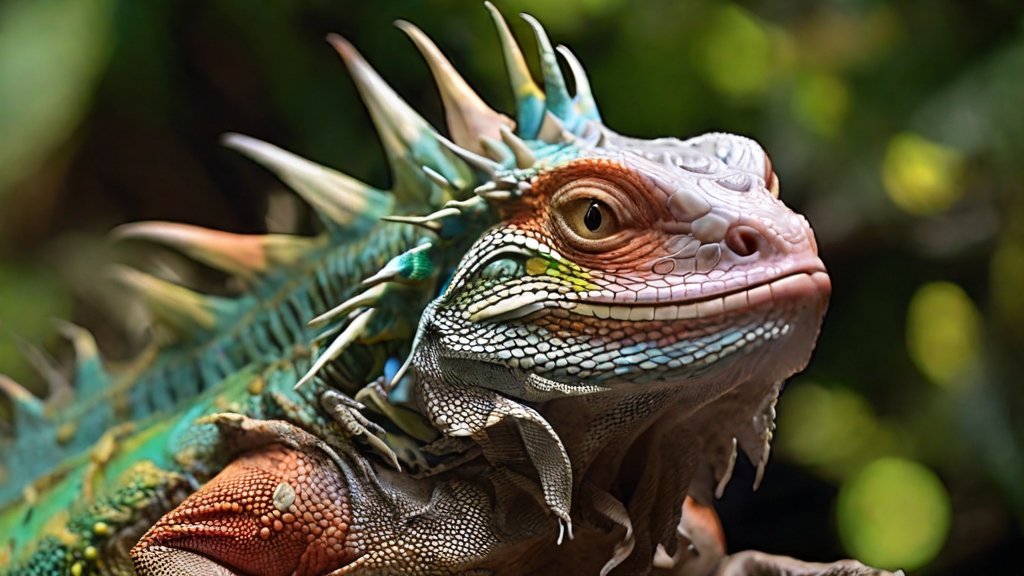As a reptile, iguanas are fascinating creatures that have unique abilities. One of the questions frequently asked about them is whether they can grow back their tails if they lose them.
In this article, we will explore this topic in-depth and provide you with everything you need to know about iguana tail regeneration.
Introduction
Iguanas are fascinating creatures that are known for their unique abilities, such as changing color and having the ability to regrow their tails.
In this article, we will focus on their tail regeneration process, answering questions about how they lose their tails, how they regenerate, and the factors that can affect the process.
Anatomy of an Iguana’s Tail
Before we dive into the process of tail regeneration, let’s first understand the anatomy of an iguana’s tail. An iguana’s tail is made up of several vertebrae bones, which are connected by cartilage. These bones and cartilage are surrounded by muscle tissue, skin, and scales.
Why do Iguanas Lose Their Tails?
Iguanas have a unique ability to detach their tails from their bodies when they feel threatened or are attacked. This is known as autotomy. The detached tail will continue to move, which distracts the predator, allowing the iguana to escape.
Can Iguanas Regrow Their Tails?
Yes, iguanas have the ability to regrow their tails. However, it’s important to note that the regenerated tail may not be identical to the original one. The new tail may be shorter, thinner, and have a different shape.
The Regeneration Process of an Iguana’s Tail
The regeneration process of an iguana’s tail is fascinating. After the tail has been detached, a blood clot will form at the site of the injury.
The blood clot will eventually form a scab, which will cover the wound. Underneath the scab, specialized cells called blastemal cells will begin to form. These cells are responsible for the regeneration process.
As the blastemal cells continue to divide, they will form new tissue and bone to replace the missing tail. The regenerated tail will continue to grow until it reaches its full length.
Factors Affecting Iguana Tail Regeneration
There are several factors that can affect an iguana’s ability to regenerate its tail. One of the most important factors is the age of the iguana. Younger iguanas have a better chance of regenerating their tails than older iguanas.
The size of the tail also plays a role in the regeneration process. The larger the tail, the longer it will take to regenerate. The overall health of the iguana can also affect the regeneration process.
Tips for Helping Your Iguana Regenerate its Tail
If your iguana has lost its tail, there are several things you can do to help it regenerate. First, make sure that your iguana is in good health. Provide it with a balanced diet, proper lighting, and a comfortable living environment.
Secondly, you should keep the wound clean and free from infection. You can do this by cleaning the wound with an antiseptic solution and covering it with a clean bandage.
It’s also important to avoid stressing your iguana during the regeneration process. Stress can slow down the healing process and make it more difficult for the tail to regenerate.
How Long Does It Take for an Iguana to Regenerate its Tail?
The length of time it takes for an iguana to regenerate its tail varies depending on several factors. On average, it can take anywhere from several weeks to several months for the new tail to fully grow.
Factors such as the age of the iguana and the size of the tail can also affect the regeneration process. Younger iguanas typically regenerate their tails faster than older iguanas.
Conclusion
In conclusion, iguanas are remarkable creatures with the ability to regenerate their tails. The process of tail regeneration is fascinating and involves specialized cells called blastemal cells that form new tissue and bone.
Factors such as the age of the iguana, the size of the tail, and the overall health of the iguana can all affect the regeneration process.
If your iguana loses its tail, it’s important to keep the wound clean and free from infection, provide a healthy living environment, and avoid stressing your iguana during the regeneration process.
FAQs
Can all iguanas regrow their tails?
Yes, all iguanas have the ability to regenerate their tails.
How long does it take for an iguana to regrow its tail?
It can take several weeks to several months for the new tail to fully grow.
Will the regenerated tail be identical to the original tail?
No, the regenerated tail may be shorter, thinner, and have a different shape than the original tail.
What can I do to help my iguana regenerate its tail?
Make sure that your iguana is in good health, keep the wound clean and free from infection, and avoid stressing your iguana during the regeneration process.
Can iguanas detach their tails multiple times?
Yes, iguanas can detach their tails multiple times throughout their lives. However, each time they detach their tail, it may take longer to regenerate.




